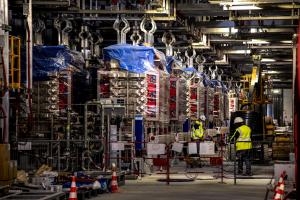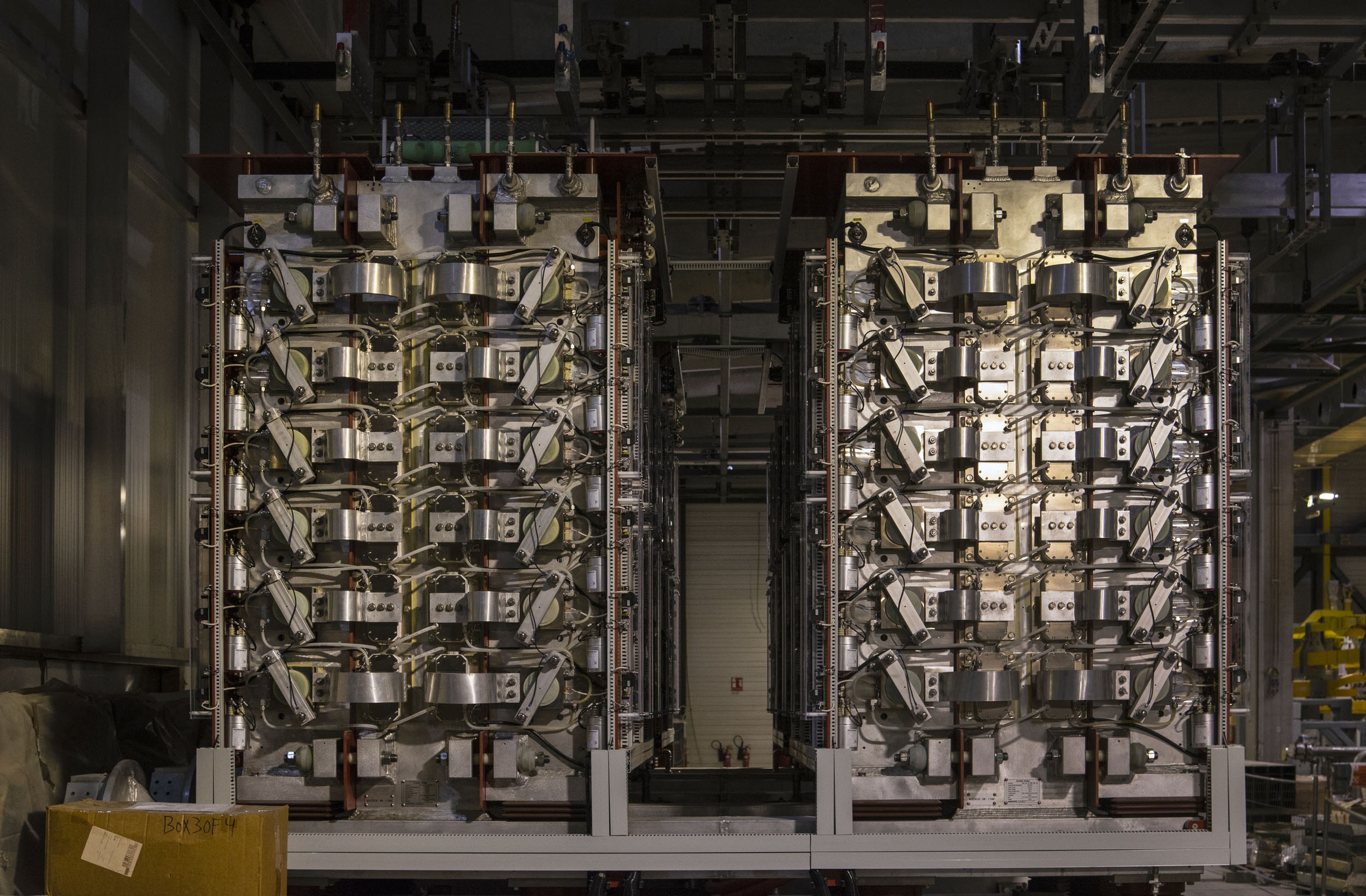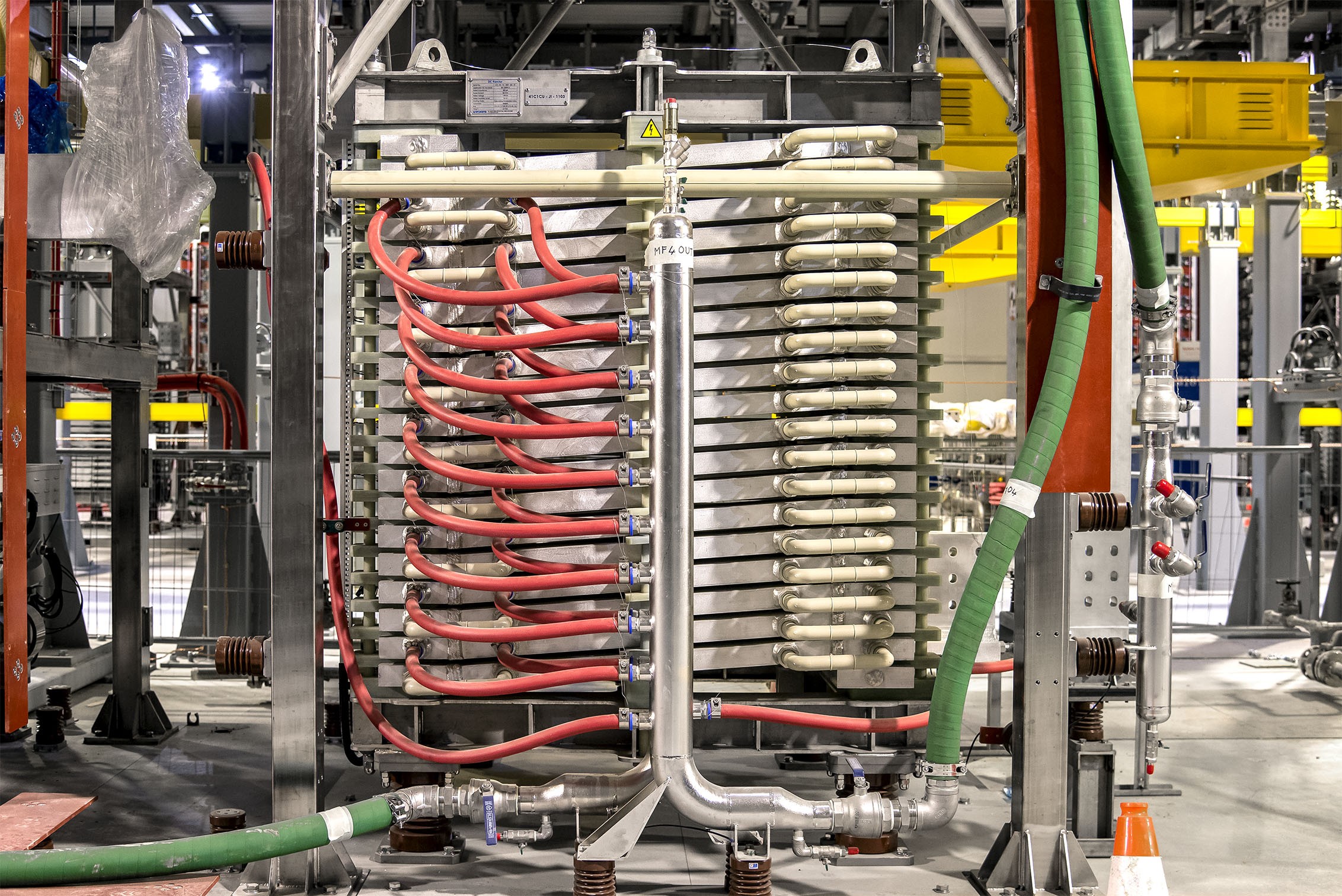Strolling along the AC/DC boulevard
Like futuristic townhouses lining a boulevard, bizarre contraptions line up along the whole length of the buildings, inside and out, creating a most peculiar atmosphere. What are all these steel and electronic devices for? Only a specialist can tell.
Along the "avenues," some blocks are identified by a sign printed in bold characters. This is an indication of what the equipment is destined for—the largest converter sets serving the most powerful coils such as the central solenoid or the 24-metre-in-diameter poloidal field coils, the smallest serving the much lighter corrections coils.
The underground infrastructure is no less impressive. Originating in the cooling tower basins, a large-diametre piping network runs underneath the boulevards, ramifying into much smaller pipes and eventually emerging close to the electrical components.
Equipment installation began in the spring of 2019, shortly after the twin buildings were transferred from the European Domestic Agency Fusion for Energy, which built them, to the ITER Organization. Close to three years later, 82 percent of the required equipment for First Plasma has been installed. One of the buildings (tagged #33 in the ITER naming system) is now completely equipped while its twin (# 32) will only be fully installed after First Plasma. The full capacity of the buildings will only be needed when the project enters deuterium-tritium operations in 2035.
An installation playing such a central role in ITER operation must of course be carefully tested before being commissioned. Beginning this summer, each converter will be connected to a dummy load outside the building to verify performance prior to its connection to a magnet coil. The system relies on tens of thousands of manually connected cables, but each set of converters is equipped with a "DC disconnector" capable of shutting off the entire circuit in the case of an incident.
When current begins to run through the converters, reactors and busbars, the buildings will be closed to human presence and strolling along the AC/DC boulevards will no longer be possible.
A dense fibre optic network will link the control-command system to the power sources and magnets so that all operations can be performed remotely from the main ITER Control Building.









